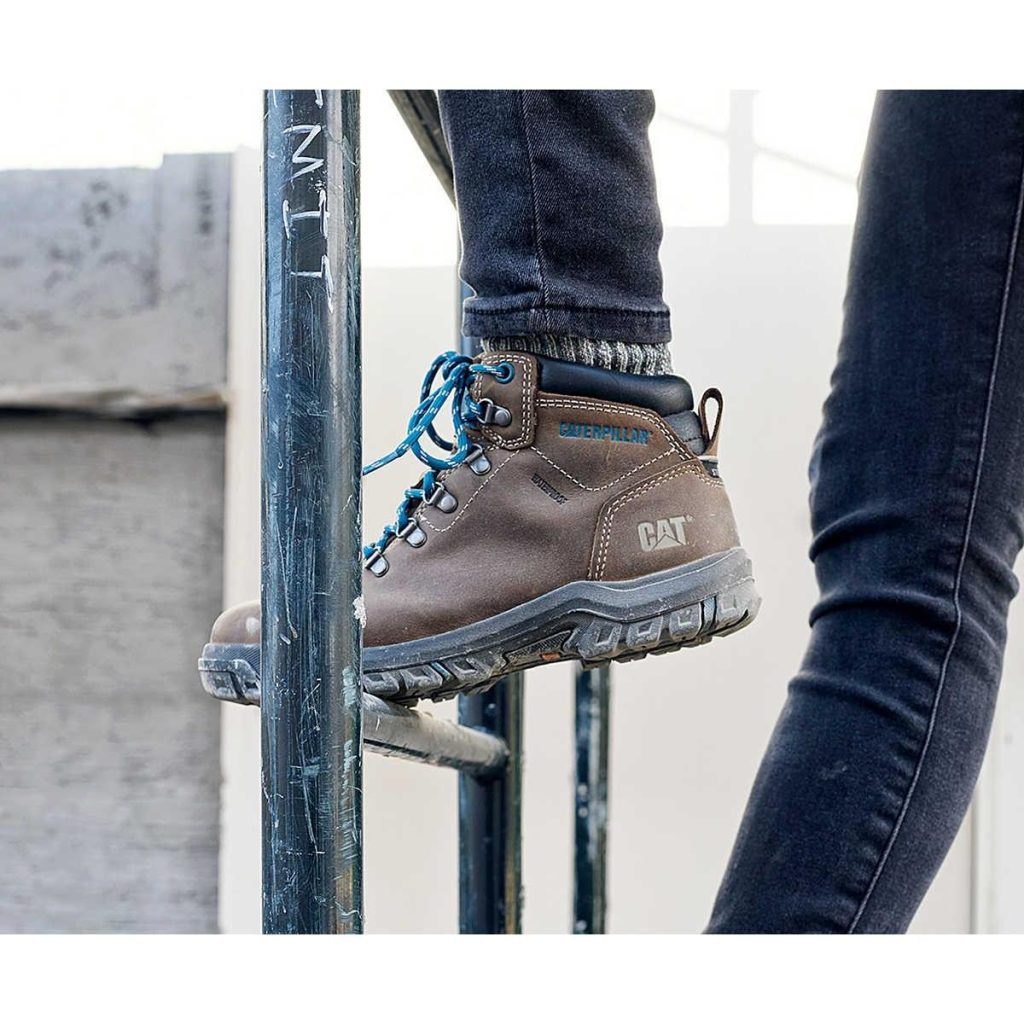When you’re knee-deep under a sink or working long hours in crawl spaces, the last thing you want is foot pain, wet socks, or a slip that sends you sprawling. Plumbers face some of the toughest, messiest, and most unpredictable environments on the job. That’s why choosing the right pair of plumbing work boots isn’t just about comfort, it’s about safety, durability, and staying dry no matter what’s in that pipe.
Whether you’re a seasoned journeyman or new to the trade, making the right choice in footwear is essential. Here are four essential tips for choosing the best boots for plumbing professionals.

1. Prioritize Waterproofing and Moisture Protection
Your feet are your foundation, and for plumbers, they’re often in wet, grimy, or unpredictable conditions. Whether it’s standing water in a crawl space or residual moisture in a commercial bathroom, your boots must keep you dry from the inside out. Investing in quality waterproof boots isn’t optional; it’s critical for health, safety, and day-to-day performance.
Why it matters: Plumbers regularly work in wet conditions, from flooded basements to leaking fixtures. Without waterproof boots, prolonged exposure to moisture can quickly lead to discomfort and serious foot health issues.
What to look for:
- Waterproof full-grain leather: Naturally resistant to moisture and abrasion
- Sealed seams: Prevent water intrusion at stitching points
- Moisture-wicking liners: Pull sweat away from the foot, reducing irritation
According to the National Institute for Occupational Safety and Health (NIOSH), trench foot (or immersion foot) is an injury caused by prolonged exposure to cold and wet environments. The condition damages skin, blood vessels, and nerves, even when temperatures are above freezing.
This loss of heat leads to tissue breakdown, poor circulation, and, if left untreated, potential infection. Plumbers without waterproof footwear are at elevated risk when working in damp crawlspaces or flooded homes.
Avoid this mistake: Don’t confuse water-resistant with waterproof. Water-resistant boots may tolerate light splashes but won’t hold up in standing water or long exposure.
2. Choose Slip-Resistant Outsoles for Safety
Slippery surfaces aren’t a rare occurrence in plumbing; they’re the norm. Wet tile, muddy trenches, or grease-slicked concrete are part of the daily grind. That’s why a boot’s outsole isn’t just a design element, it’s a safety feature. Choosing the right traction technology can mean the difference between a close call and a painful injury.
Why it matters: Plumbers often work on wet tile, slick concrete, or uneven surfaces. Slipping is a serious hazard. According to the U.S. Bureau of Labor Statistics, 39.2% of construction fatalities in 2023 were caused by slips, trips, and falls (BLS).
What to look for:
- Slip- and oil-resistant outsoles
- Wedge soles or deep-lug treads for traction on wet or greasy floors
- Shock absorption to cushion the impact on hard floors
Pro insight: Wedge soles work best for flat indoor surfaces like concrete, while lug soles offer more grip on uneven or outdoor terrain.
Quick note: Always inspect the tread pattern; fine grooves clog easily, while wider lugs provide longer-lasting traction.
3. Go for Comfort, Especially for Long Days
Plumbing is demanding physical labor, often performed in tight, awkward positions. Discomfort doesn’t just stay in your feet; it creeps into your knees, hips, and back. Choosing boots that provide ergonomic support and shock absorption can help prevent fatigue and long-term wear on your joints, keeping you sharp from the first job to the last.
Why it matters: Plumbers are on their feet for hours, often in crouched or awkward positions. Without proper support, you risk fatigue, sore arches, and even back pain.
What to look for:
- Cushioned midsoles (EVA or polyurethane) for shock absorption
- Anatomical arch support to prevent foot strain
- Padded collars, tongues, and breathable liners to enhance long-term comfort
Foot health insight: Improper footwear is a known risk factor for foot pain and musculoskeletal strain. A 2024 review in Footwear Science links poor cushioning and improper fit to chronic discomfort among workers in physically demanding industries (PMC).
Extra tip: Choose boots with removable insoles if you use orthotics or have specific arch needs.
4. Look for Durability and Long-Term Value
Boots that wear out every few months cost more in the long run, and could fail you when it matters most. Durability isn’t just about rugged soles or tough leather; it’s about construction methods, material quality, and maintenance ease. Look at your boots like a tool: the better they’re built, the longer they serve.
Why it matters: Plumbing is tough on boots, think water exposure, bending, abrasions, and chemicals. You need gear that lasts.
What to look for:
- Goodyear welt construction: Adds durability and allows for resoling
- Oil-tanned leather uppers: Withstand cracking and stay flexible
- Toe protection: Soft toe for mobility; composite toe for job sites requiring impact resistance
Longevity insight: While no peer-reviewed study quantifies durability across boot construction types, many workwear professionals and manufacturers suggest that Goodyear welted boots can last 2–3 times longer than cement-constructed boots when maintained well. This construction also allows for resoling, a cost-effective option for long-term wear.
Maintenance tip: Use conditioners like mink oil or beeswax to extend leather life and reinforce waterproofing.
Additional Considerations
Electrical Hazard (EH) Rating
Plumbers sometimes work near electrical systems. Look for boots with an EH rating that insulates against open circuits up to 18,000 volts, especially if you’re doing work in commercial or mixed-trade environments.
Breathability and Temperature Control
Working in hot crawl spaces? Overheating can lead to foot odor, sweat buildup, and discomfort. Breathable membranes like Gore-Tex® offer moisture control without compromising waterproofing.
Weight
If you’re moving between service calls, the overall boot weight matters. Heavier boots may offer more protection, but can fatigue your legs over time. Lightweight composite options or hiker-inspired builds are great for mobile professionals.
Final Thought: Invest in Your Safety and Comfort
Boots aren’t just PPE, they’re performance gear. Choosing the right pair can improve your safety, comfort, and energy levels throughout the workday. And over time, it saves money and protects your health.
Keep Up With Industry Best Practices
Looking for deeper insight into gear and safety trends? UK Construction Blog frequently publishes updates on PPE innovation, footwear technologies, and safety compliance across skilled trades.
Also, keep an eye on safety bodies like the Occupational Safety and Health Administration (OSHA) for updates on footwear compliance and evolving workplace regulations.
